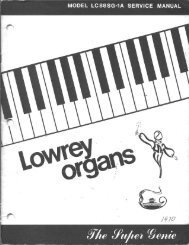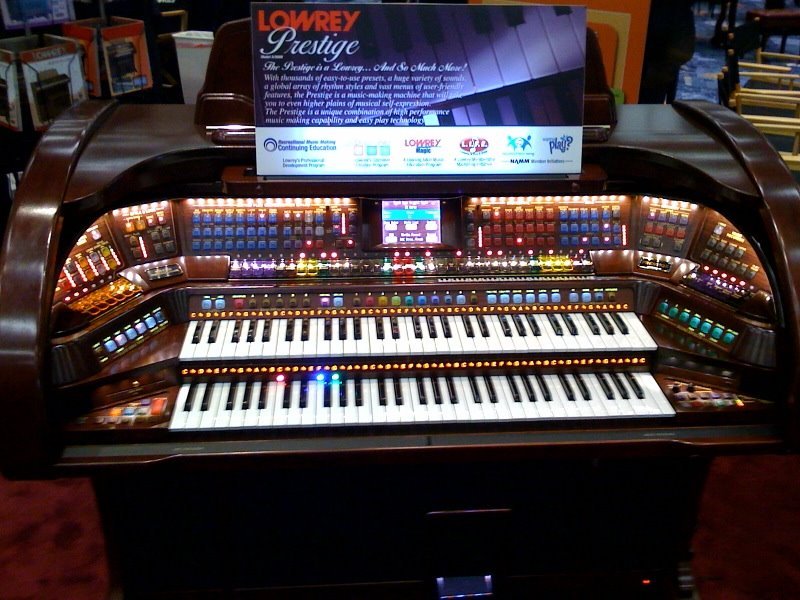
One of the reasons for changing to the ORLA was the advantage of having two 61 note keyboards. The ORLA has concealed console lighting like the AR100 not AR80. The ORLA has a piano style sustain pedal but does not have a knee lever. The expression pedal is in effect the same but I prefer the position of the ORLA pedal and find it easier to use the kick switches. This is good in that it brings the music a little closer and allows for thicker piles of books but it does mean that you have to put the music away if you want to put the lid down. The music rest is larger than the one on the AR but the top of the roll up cover is used for the music to stand on. The ORLA comes in two parts so the keyboard section is fastened to the sound-box/pedal unit. The cabinet is real wood veneer as are the fill in pieces at the side of the keyboards (metal on the AR). The ORLA is the same width and height as the AR80 but an inch or so less in depth. It would be interesting to hear her assessment of that organ. I was fascinated to read that one of our members had chosen a Roland AT80SL but has now changed to the Lowery Sensation. Please note that this is not intended to knock the AR80 in any way but rather to show what I feel I have gained/lost by changing instruments. I have now had the organ for two weeks and feel able to give an objective assessment. Whitley Bay was able to give me a better price than the main agents, a longer guarantee and delivery of a new boxed organ in two days. This did not sound bad but was chipboard covered with wallpaper! Anyway I went along to look at a used ORLA 9000 and was really impressed so decided to order a new GT9000DLX2. Readers will know that I had recently considered the Roland AT900c/800 but was very disappointed when I got my hands on one - not very user friendly and just did not feel right to me.Ĭhristine asked if I had considered an ORLA and I must confess to having had a bit of prejudice towards the brand having previously owned an ORLA R520 (or was it 510?).


She tried to sell me a Lowery Sensation at a very good price but before going to look at it I was able to establish that it was a little too big to get through the door into my music room. No doubt the credit crunch is hitting the organ market like all other parts of the economy. A make of concertina from the 19th century … Charles Wheatstone invented the concertina in 1829.A few weeks ago Christine from Whitley Bay Organs rang me to try to interest me in a new organ.


Detroit Michigan USA Victorian Pump Organ 1884 Type of Instrument/ Item: It makes sound by blowing air through reeds, which are tuned to different pitches to make musical notes.Ĭlough & Warren Co. Specific types of pump organ include the reed organ, harmonium, and melodeon.Īdditionally, what is a harmonium organ? A harmonium, also called a "melodeon", "reed organ" or "pump organ", is a keyboard instrument that is a lot like an organ. The pump organ is a type of free-reed organ that generates sound as air flows past a vibrating piece of thin metal in a frame. Subsequently, one may also ask, how does a pump organ work? It is an American development of the harmonium, from which it differs in two principal respects.
#Lowrey organ weight free
Melodeon, also spelled Melodium, also called Reed Organ, or American Organ, keyboard instrument sounded by the vibration of free reeds by wind.


 0 kommentar(er)
0 kommentar(er)
